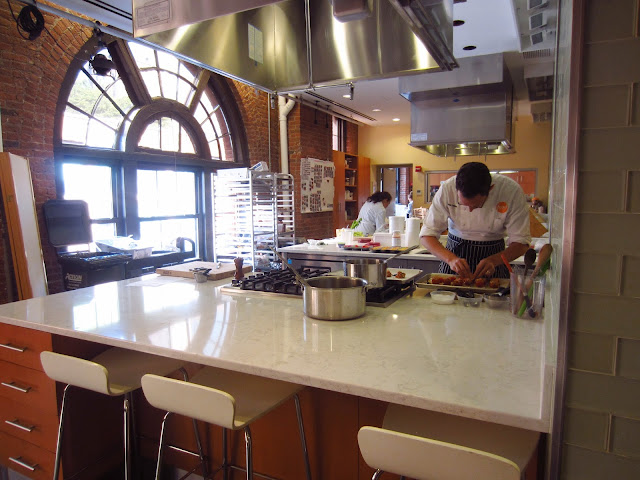A while back, my sister and I went to the apartment of our friend, Ataklit, a native Ethiopian/Israeli, to cook some traditional Ethiopian food. He talked us through the process of making gomen (chard with onions and olive oil), dinch alicha (vegetarian stew with onion, carrot, potato, and turmeric), shiro (chickpea flour sauce with fried onions), fitifit (onion with tomato and ground red pepper), and the proper way to present someone with injera (Ethiopian flat bread made with teff flour).
Potatoes, for the dinch alicha. We started the potatoes in boiling water so they'd cook for 20-25 minutes. Later, we'll add carrots, onion, garlic, and turmeric.
In the meantime, we started sweating the chard, for the gomen.
Making the dinch alicha - after the potatoes started to get soft, we added the carrots and turmeric.
Gomen, sweating. Salt and oil added later.
This pot had diced onions that were sweating for a few minutes, until we added the olive oil. This is the beginning of the fitifit.
Ataklit buys his spices at the local Ethiopian market; you can't just get these spices anywhere! Above, Ethiopian red pepper (spicy*)
Ataklit and my sister going over his hand-written ingredient list.
red pepper
the ingredient list, written in Amharic
stirring the fitifit
tomatoes, chopped and ready to go in the fitifit.
These delicious onions are waiting for the remaining ingredients for the shiro.
Above, Ethiopian turmeric, called erd.
Chickpea flour, called mitin shiro. It was a little spicy.
Injera - Ethiopian flatbread
Its spongy texture and sour taste was new for me. It tasted like a slightly sour, tangy pancake or crepe, and was incredibly filling. To put in the fitifit, Ataklit asked us to bring him some injera. He told us the most acceptable way to bring someone injera if they ask for it is to fold it in half and then in half again. Otherwise, people might get offended.
We added some torn injera to the fitifit to add volume.
We broke up the pieces and let them absorb the liquid.
For the meal, we tore injera in half and rolled them to put on a plate.
መልካም ምግብ
Melkam megeb! (Bon appetit in Amharic)
መልካም ምግብ
Melkam megeb! (Bon appetit in Amharic)
Bottom left: dinch alicha Bottom right: injera
Top right: shiro Below that: gomen and fitifit
Top right: shiro Below that: gomen and fitifit
Unrolled pieces of injera, ready for fillings. This piece of injera is used as a base for your food. It is topped with whatever you made, and then eaten at the end of the meal.
Delish! Clockwise from top left: dinch alicha, gomen, fitifit, and shiro
You are meant to pick up the food with additional pieces of injera, folding it into a handful.
My favorite was the turmeric-heavy dinch alicha. I took some home with me for lunch the next day. I was so full after the meal I could barely finish the injera on the bottom of the plate!
Ataklit pressed some tea to finish the meal. What a fun experience!
I encourage you to try authentic Ethiopian food. It's wonderful (and often vegetarian)!
See this site for Ethiopian recipes!
See this site for Ethiopian recipes!































































